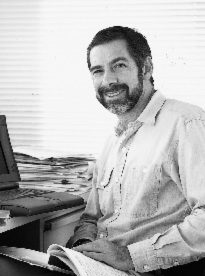Our Science – Lowy Website
Douglas R. Lowy, M.D.
 |
|
|||||||||||||||||||||
Biography
Dr. Lowy received his M.D. from New York University School of Medicine in 1968. Between 1970 and 1973, he was a research associate in the Laboratory of Viral Diseases, National Institute of Allergy and Infectious Diseases, NIH. He trained in internal medicine at Stanford University and dermatology at Yale University, and started his laboratory at the NCI in 1975. In addition to his role as chief of the Laboratory of Cellular Oncology, Dr. Lowy is also chief of the Basic Research Laboratory and serves as a deputy director for the Center for Cancer Research. He has received the Wallace Rowe Award for Virus Research and has been a member of many scientific advisory boards, grants committees, and editorial boards.
Research
This laboratory has had a long-term interest in the molecular biology of tumor viruses and growth regulation. Much of the work is concerned with fundamental aspects of normal and abnormal cell growth, but some of the research has direct clinical application. The systems studied include papillomaviruses and signaling through the Ras oncoproteins.
Papillomaviruses
Papillomaviruses are associated with benign and malignant tumors in humans and animals. More than 70 different human papillomavirus genotypes (HPV types) have been described. A subset of HPV types infect the genitalia, and some of these types have been etiologically linked to cervical cancer, which is the second most common cancer among women worldwide. The papillomavirus research is carried out in collaboration with John Schiller's laboratory, which is also in the LCO.
We have examined biochemical and genetic aspects of the papillomavirus oncogenes and their protein products. In addition, we have developed techniques for large-scale production of virus-like particles (VLPs) composed of papillomavirus structural proteins. The VLPs are providing insight into basic aspects of papillomavirus biology as well as serving as the basis for a candidate subunit vaccine against papillomaviruses. Our vaccine studies in animals have shown that immunization with VLPs can induce substantial antibody-dependent protection against experimental challenge with papillomaviruses that induce cutaneous or mucosal lesions. Early phase human trials with a candidate HPV-16 L1 VLP have shown the vaccine was well tolerated, induced a consistent antibody response, and at high doses was as immunogenic without adjuvant as with adjuvant. We have developed in vitro assays for HPVs that suggest that little cross-immunity exists between different HPV types. This information has important implications for developing a polyvalent vaccine to protect against genital papillomaviruses associated with benign and malignant disease. Refinements in the VLP technology have enabled us to incorporate other proteins into the VLPs, thereby giving the VLPs additional properties. We have also been able to study the formation of infectious virus in vitro, leading to the unexpected observation that the minor structural viral protein L2 recruits the other components required for assembly of infectious particles. We have also elucidated some aspects of the mechanism by which papillomaviruses establish infection.
Regulation of Normal and Abnormal Growth
Most of our recent growth regulation research has been concerned with oncogenes and tumor suppressor genes as positive and negative regulators of normal and neoplastic growth. We have recently studied the Ras-specific guanine nucleotide exchange factors (Ras-GNEFs). These molecules play a key role in signal transduction, and Ras is mutationally activated in many human and animal tumors. The analysis of two closely related, widely expressed Ras-GNEFs, Sos1 and Sos2, has identified important differences in the stability of their encoded proteins and in the duration of their signaling properties. The Sos2 protein carries out long-term signaling less efficiently that Sos1 to a degree that physiologic levels of Sos2 cannot support transformation by oncoproteins such as tyrosine kinases, which rely on Sos-dependent activation of Ras for their transforming activity. We have also studied GRF1 and GRF2, two closely related brain-specific Ras-GNEFs that are activated by calcium. We have found that the calcium-dependent activation of GRF stimulates Raf via two signals, one that is Ras-dependent and another that is Ras-independent. Also, GRF1 and GRF2 form homo- and heterodimers through their Dbl domains. Dimerization may be required for propagating the Ras-independent signal from GRF that simulates Raf. Further studies are planned to elucidate the mechanisms underlying the regulation of Sos and GRF signaling.
Most recently, we have begun to investigate E-cadherin, a key cell surface adhesion protein that is a tumor suppressor that is frequently silenced in many epithelial cancers and melanoma. We have found that E-cadherin specifically inhibits the activation of a variety of receptor tyrosine kinases (RTKs) by their physiologic ligands. The inhibition probably results from the formation of a complex between E-cadherin and the RTKs, which restricts the ability of the ligands to bind their cognate RTK with high affinity. This inhibitory activity of E-cadherin is abrogated when it is silenced in tumors, permitting more robust responses to RTKs by their ligands, a widespread phenomemon implicated in the pathogenesis of many tumors. Future studies will examine other mechanisms by which E-cadherin regulates cell growth and the possibility of using E-cadherin as a potential cancer treatment target.
Collaborators on this research include Francoise Breitburd and Gerard Orth, Pasteur Institute, Paris; Allan Hildesheim, Eugenio Santos, and Mark Schiffman, NIH; Reinhard Kirnbauer, University of Vienna; and Klaus Nielsen and Berthe Willumsen, University of Copenhagen.
This page was last updated on 6/11/2008.

